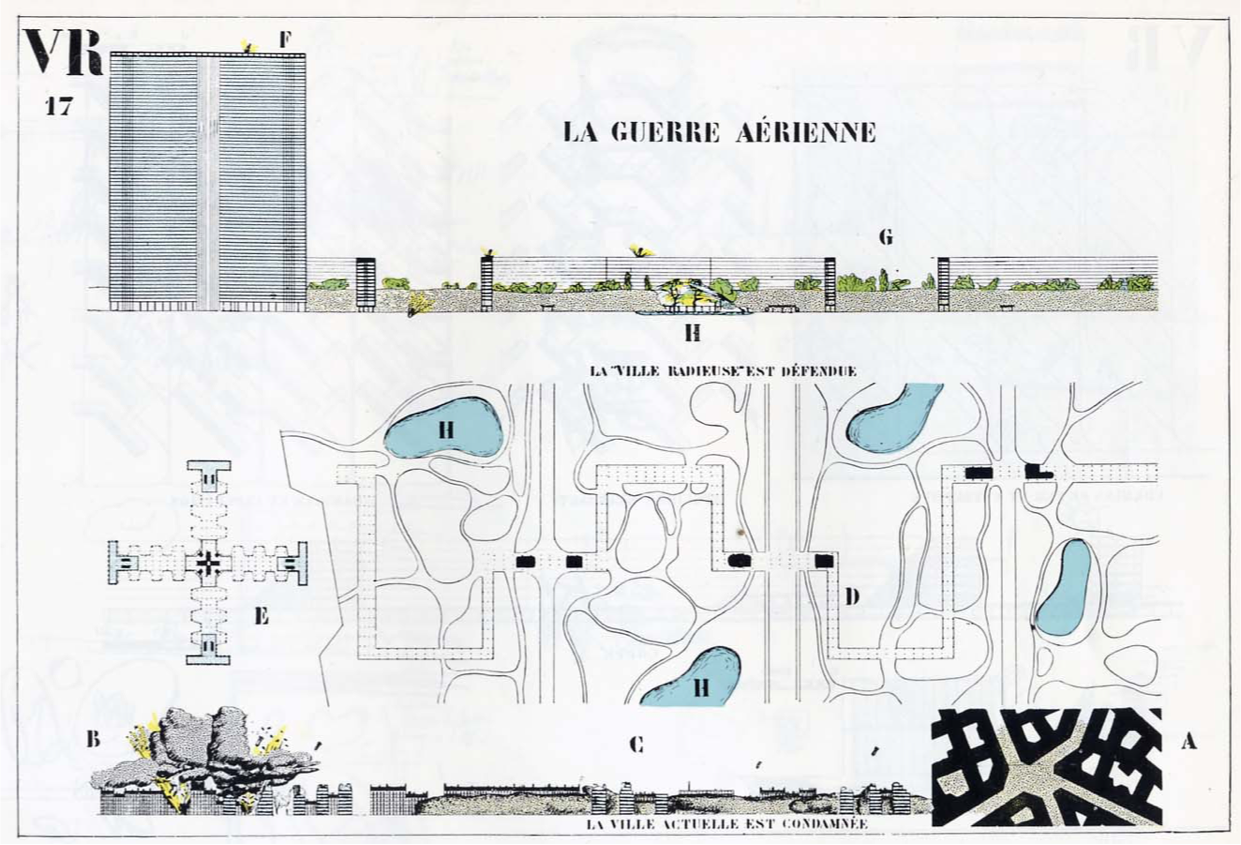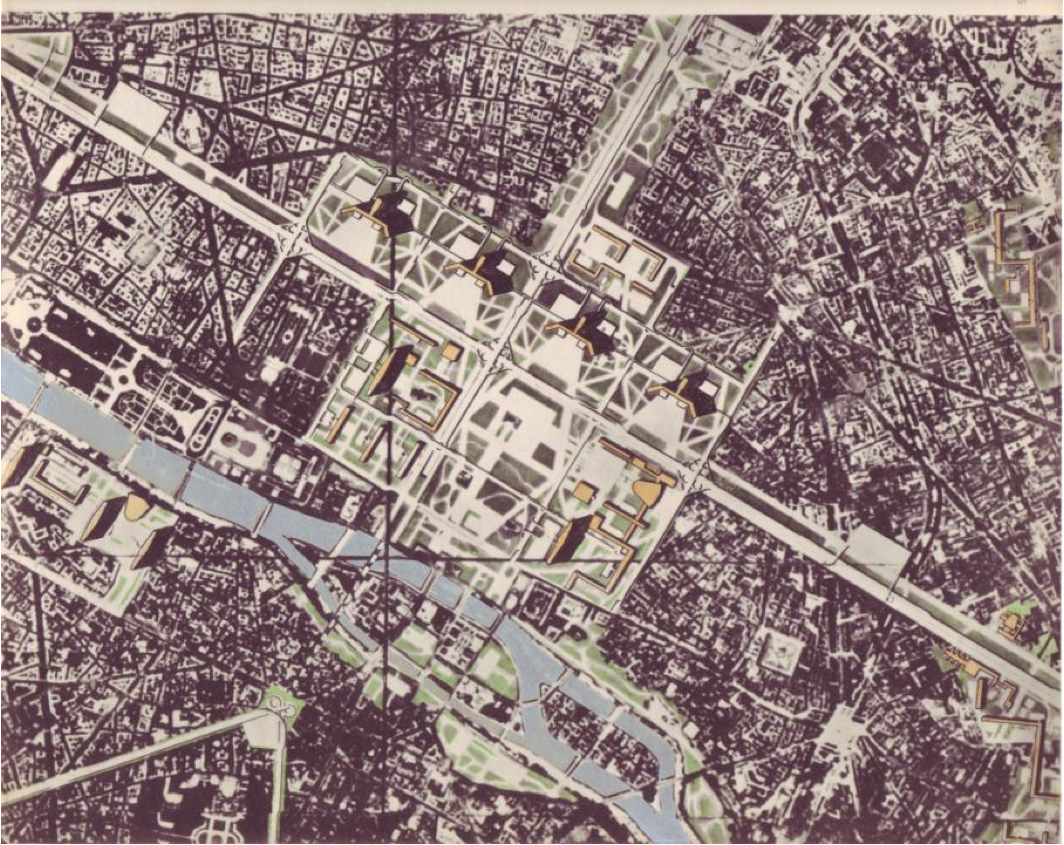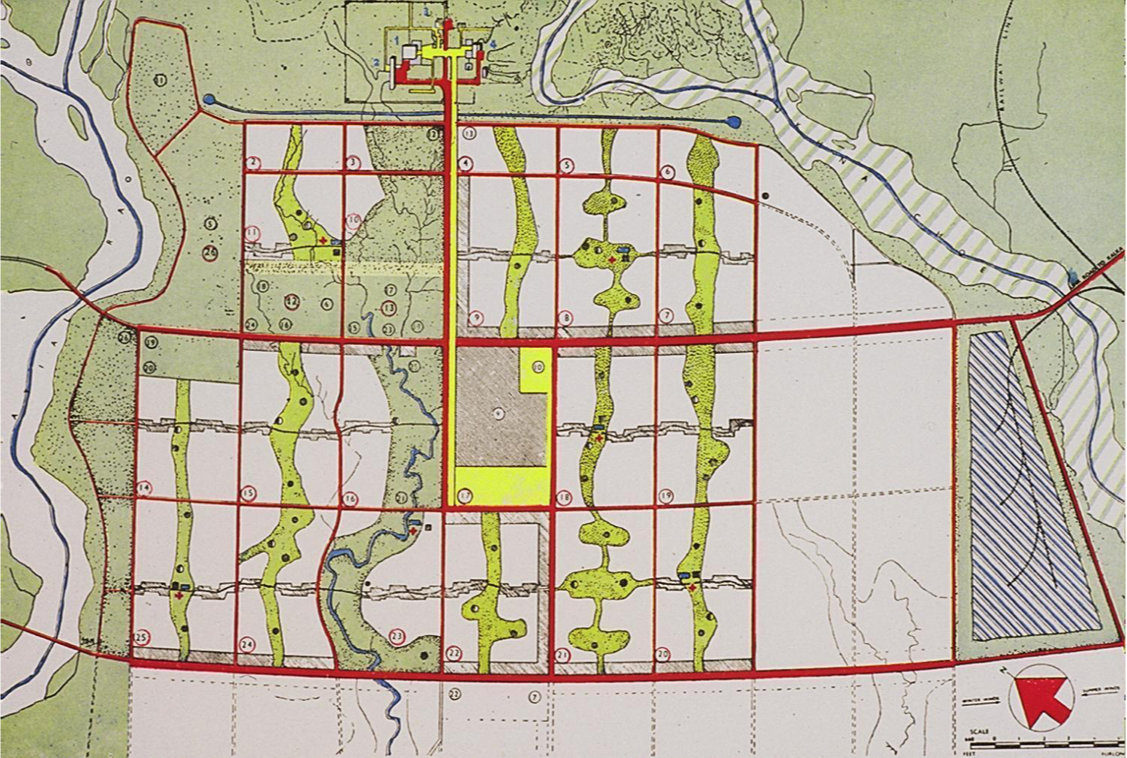The Swiss-French architect Le Corbusier moved to Paris in 1917 and lived in it for the rest of his life. He developed many projects for the city which was the subject of his experimentation. Most importantly, like no other modern architect, he created a vision for the future of cities and was able to build it later in India. His goal was to create the prototypes and lay the foundations for modern architecture and town planning. His first urban project was the Contemporary City for 3 million people from 1922 where he conceived a completely new city of office towers, dwellings and large urban parks. Later, he designed Plan Voisin for Paris in 1925, which also wasn’t built. His vision continued to evolve over time with every opportunity to propose a new project for Paris or any of the other places he visited or worked on like Buenos Aires, Sao Paolo, Rio de Janeiro, Bogota, Algiers, New York and others.

Le Corbusier published his book “Precisions on the Present State of Architecture and City Planning” in 1930 based on a series of lectures he held in Buenos Aires. The book is a testimony of the impact that the visit to Argentina had on Le Corbusier. There, he witnessed the stunning beauty and enormous potential for great works that the city had. His famous sketch of the five skyscrapers on water and the city plan inspired some of the projects that defined the later urban development of Buenos Aires.
The great architect continued evolving his vision for the modern city with the project and book Ville Radieuse(Radiant City) form 1933, where he presented in a complete way his theories and guidelines on city planning. Everything in the city had to be designed based on the human scale and proportions that he later called the Modulor. According to his plan, the housing areas were close to the center of the city and took the best land. The residential buildings are tall and elevated above the ground on pilotis and surrounded by green areas and recreational sites. They are separated from the industry by large parks and sports facilities. The public buildings are in the center culminating with the business district on the top. The government to one side and the universities to the other. Later in 1937, Le Corbusier used the ideas of the Radiant City as the base for the exhibition design of the New Times Pavilion (Palace of Urbanism) at Universal Exposition in Paris.

If Paris was the laboratory, India was the full application of Le Corbusier’s urban theories. Le Corbusier finally built his concept for a modern city in Chandigarh, the capital of Punjab, during the 1950s. This was the first time when a truly modern city could be built from scratch. Despite being a foreign architect, his project in Chandigarh was one of the most “Indian” and livable cities ever built. He took inspiration from the local culture and tradition and translated them into modernity.
Le Corbusier’s vision for the new world was profound. He imagined and designed a total transformation of ourliving environment. His projects and theories were really influential and inspired many generations. He was as prolific a writer and painter as he was an architect. Even if he was criticized as too radical, the architecture of the mid 20th century was widely dominated by his discourse. He also worked closely with other artists and thought leaders to equip humanity with the architecture and cities for new age, which were some of the most defining works of modern architecture.

If you would like to learn more about Modern Architecture, you can consider our online courses:

